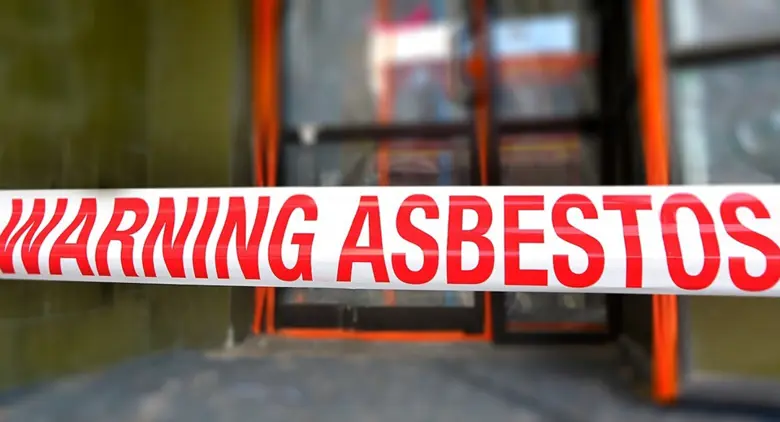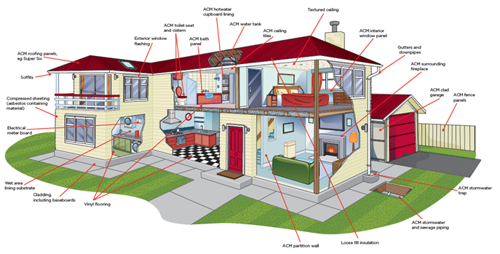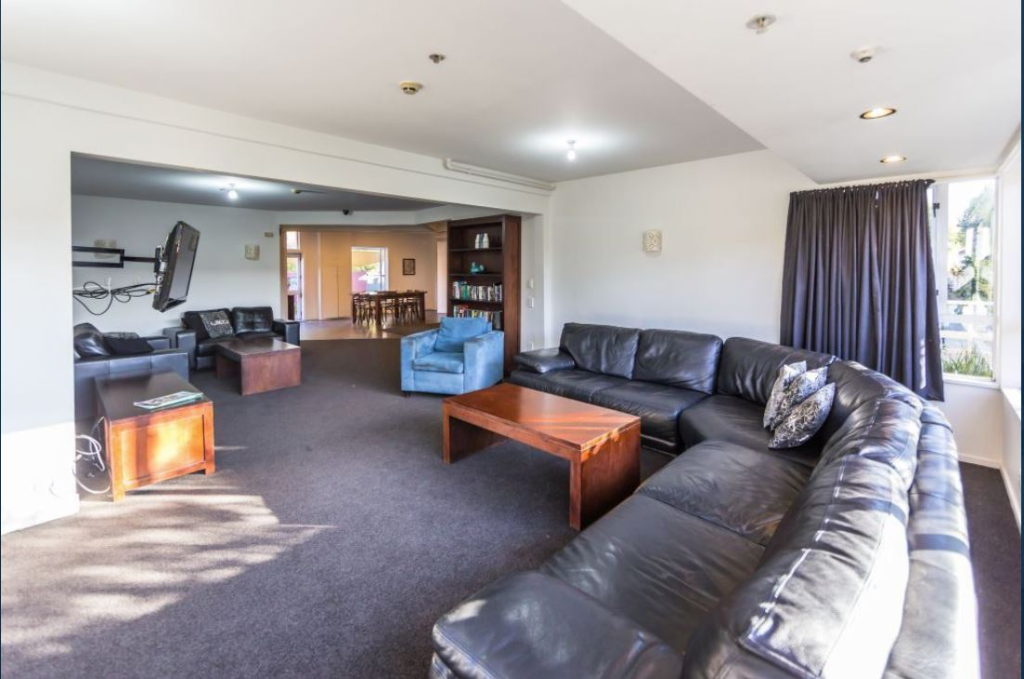

Asbestos Management – A Dummy’s Guide

The Health & Safety (Asbestos) Regulations came into law in April 2016, so it has been around for two years now but has crept up on us rather quietly. The purpose of the regulation is to set standards around working with asbestos safely and to ensure that this regulation works in tandem with the Health & Safety at Work Act (HSWA).
What is asbestos & where is it found?
Asbestos is a hidden danger and can be found in commercial and residential buildings built between 1940 and 1990. It is a naturally occurring mineral found in materials used and imported into New Zealand.

Image - locations of asbestos in a residential dwelling, worksafe.co.nz
What are the risks?
If asbestos contaminated material (ACM) is intact and left undisturbed then it is relatively safe, but if it is breaking down or you intend to carry out activity to disturb it then it can become a serious health hazard. Breathing in fibres can cause potential fatal cancers and lung diseases.
If you think there may be ACM, get an expert to take a look and get it tested by a certified lab. If test results are positive there are a couple of things you can do
- if it is in a good stable condition and will not be impacted by the work you can leave it undisturbed
- otherwise you can hire a person with a certificate of competence to work with asbestos to seal or encase the area and remove it
Asbestos waste must be disposed of in an approved refuge site as soon as possible; it cannot be sold or re-used.
Do we need an asbestos plan in place for every rental property?
It is a high probability that some of your properties will have ACM. It was used because it is strong, fire resistant and durable however it is non-biodegradable.
The Code of Practice released in November 2016 (around 250 pages long and available on the work safe website) is rather wordy and didn’t clearly outline when landlords should test.
Thankfully, Worksafe released a practice note in May 2018 for residential landlords stating the duty to identify asbestos and have an asbestos management plan (AMP) only applies
- when you are planning and carrying out the work
- to the area relevant to the work creating a risk or exposure to respirable asbestos fibres
What do the guidelines tell us?
You need to have a process in place to clearly identify asbestos and ACMs before any major repairs or refurbishments take place
- you must assess any risks and identify ways to control them
- if a person conducting business or undertaking (PCBU) work on a property identifies asbestos they must tell the homeowner, landlord and occupant
- a written asbestos management plan (AMP) must be developed
- engage a suitably qualified and experienced person to ascertain whether asbestos is present and have the results tested at IANZ accredited lab
- the results need to be made available to all PCBUs and occupants of the property
Who is the PCBU?
Both the Landlord and the Property Manager are the PCBU, which means they both have a responsibility to manage the risk of asbestos.
Under HSWA landlords and PCBUs must ensure that, when work is carried out at their property, it is done safely and without endangering workers or others, including tenants. There are significant fines in place for PCBUs who fail to comply with the HSWA ranging from $10,000 to $50,000. For further information, check out worksafe.govt.nz.


